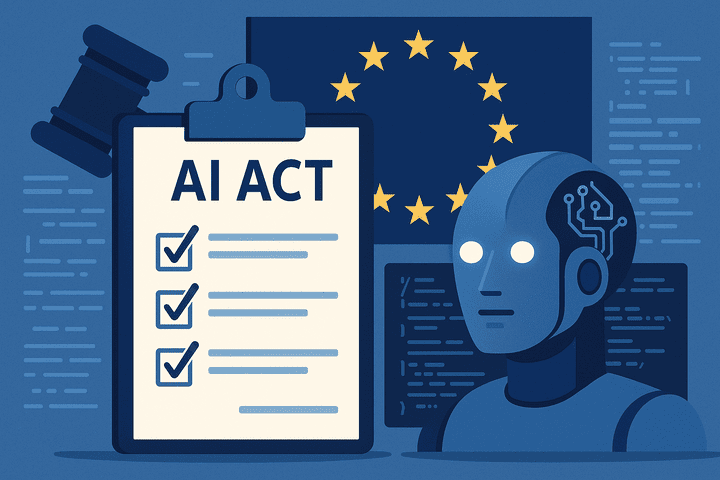EU AI Act’s General-Purpose AI Rules Go Live in August 2025

Table of Contents
Introduction
On 2 August 2025, the European Union’s landmark Artificial Intelligence Act (AI Act) activates its governance rules and obligations for general-purpose AI (GPAI) models. This milestone brings the world’s first comprehensive AI regulatory framework one step closer to full application.
Background & Timeline
The AI Act was adopted on 21 May 2024 and entered into force on 1 August 2024. Its provisions phase in over time:
- 2 February 2025: Prohibitions on certain AI practices and AI literacy obligations take effect.
- 2 August 2025: Rules for general-purpose AI models become applicable.
- 2 August 2027: Requirements for high-risk AI systems embedded in regulated products begin.
Key Obligations for GPAI Providers
From 2 August 2025, providers of GPAI models must:
- Register Models: File each GPAI model in the European AI Office’s central registry.
- Ensure Transparency: Publish clear documentation of model capabilities, limitations, and intended uses.
- Manage Risks: Implement ongoing risk assessments covering bias, security, and potential misuse.
- Enable Human Oversight: Design workflows that allow human intervention in critical use cases.
- Adopt Data Governance: Maintain auditable records of training datasets and comply with EU data protection rules.
Industry Impact & Compliance Challenges
Large tech companies are mobilizing legal and compliance teams to meet registration and documentation deadlines. Smaller AI developers may face resource constraints and higher administrative costs. EU Member States’ supervisory authorities will enforce these rules, with fines up to 7 percent of global annual turnover for serious violations.
Expert Insights
Analysts forecast a surge in demand for AI governance platforms and consulting services:
- A Goodwin Law report calls for immediate gap analyses to avoid non-compliance.
- CSIS highlights the importance of a robust Code of Practice to clarify the GPAI obligations.
- IBM notes that transparency requirements could drive best practices in model development and deployment.
Personal Take
As an AI practitioner, I welcome these rules as a driver of more responsible innovation. While the administrative load is significant, the emphasis on transparency and risk management will elevate industry standards. The success of this rollout hinges on the clarity and practicality of the forthcoming Code of Practice.
What’s Next
Stakeholders should begin by auditing existing models, setting up internal AI governance frameworks, and monitoring draft guidance from the European AI Office. Public consultations on the Code of Practice will open in mid-2025, offering a chance to influence final implementation details.
Conclusion
The 2 August 2025 launch of GPAI rules under the EU AI Act marks a pivotal moment in AI regulation. By defining clear obligations for registration, transparency, and oversight, the EU is setting a global benchmark for ethical and safe AI deployment. Organizations must act now to align with these pioneering requirements.
References
- Implementation Timeline | EU Artificial Intelligence Act: artificialintelligenceact.eu/implementation-timeline/
- AI Act Regulatory Framework | European Commission: digital-strategy.ec.europa.eu/en/policies/regulatory-framework-ai
- What is the EU AI Act? | IBM: ibm.com/think/topics/eu-ai-act
- The EU Code of Practice for GPAI | CSIS: csis.org/analysis/eu-code-practice-general-purpose-ai-key-takeaways-first-draft